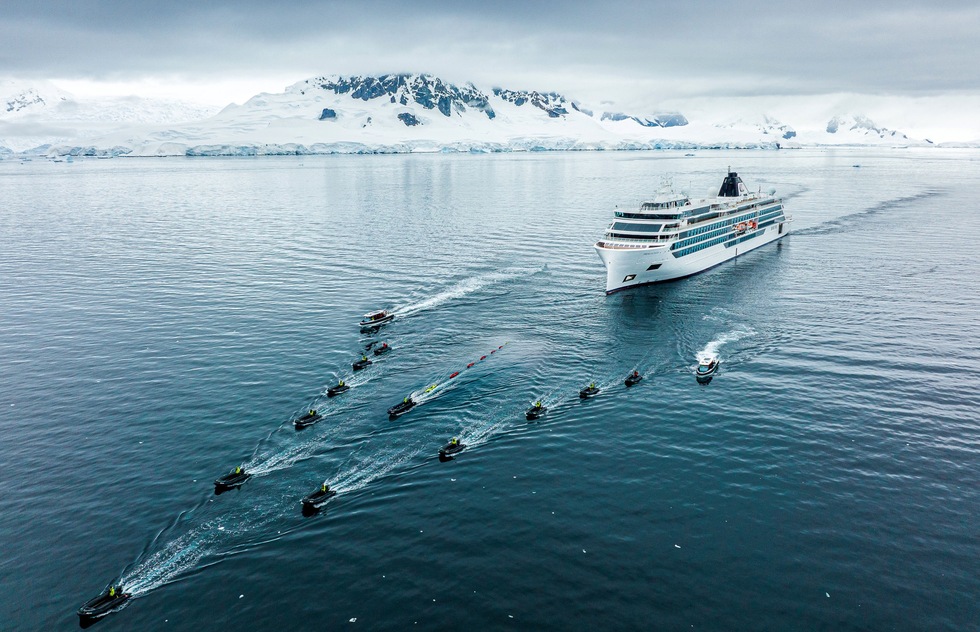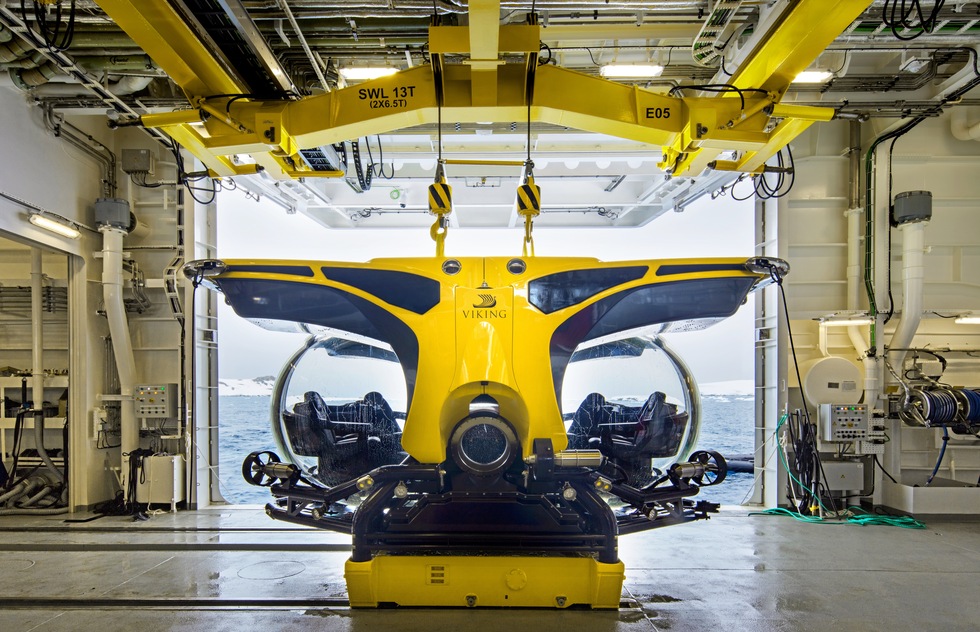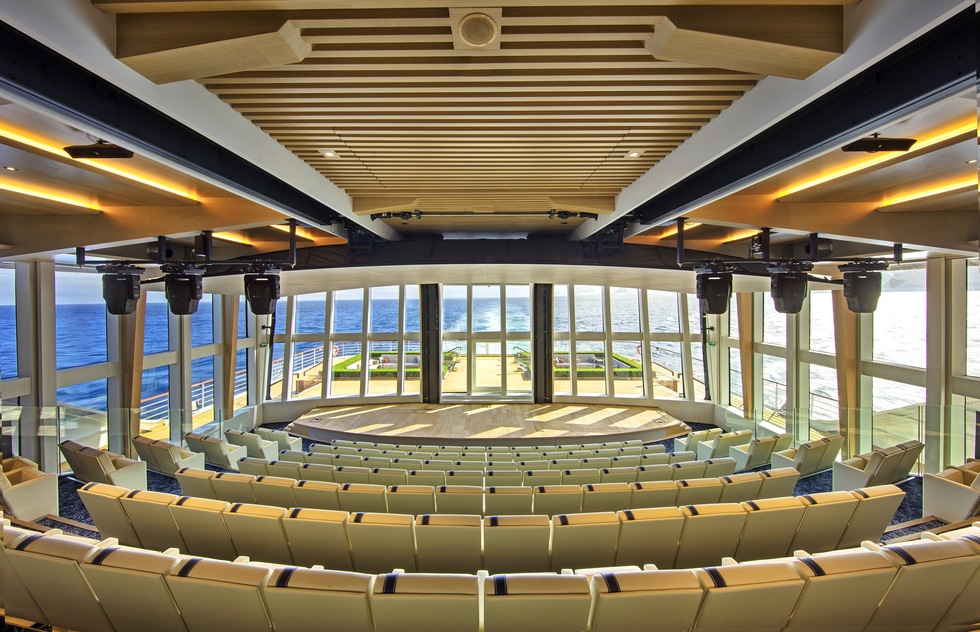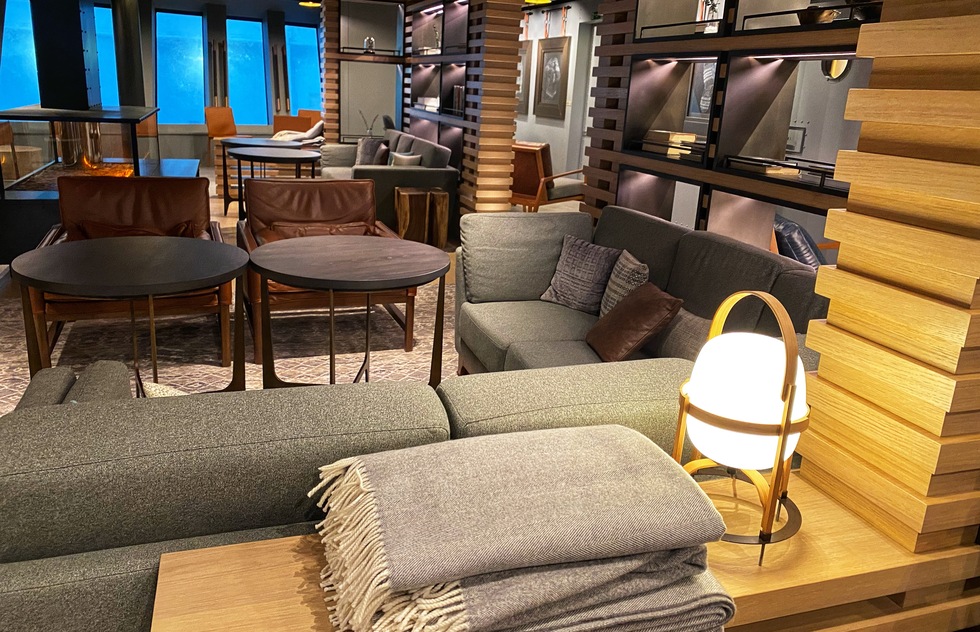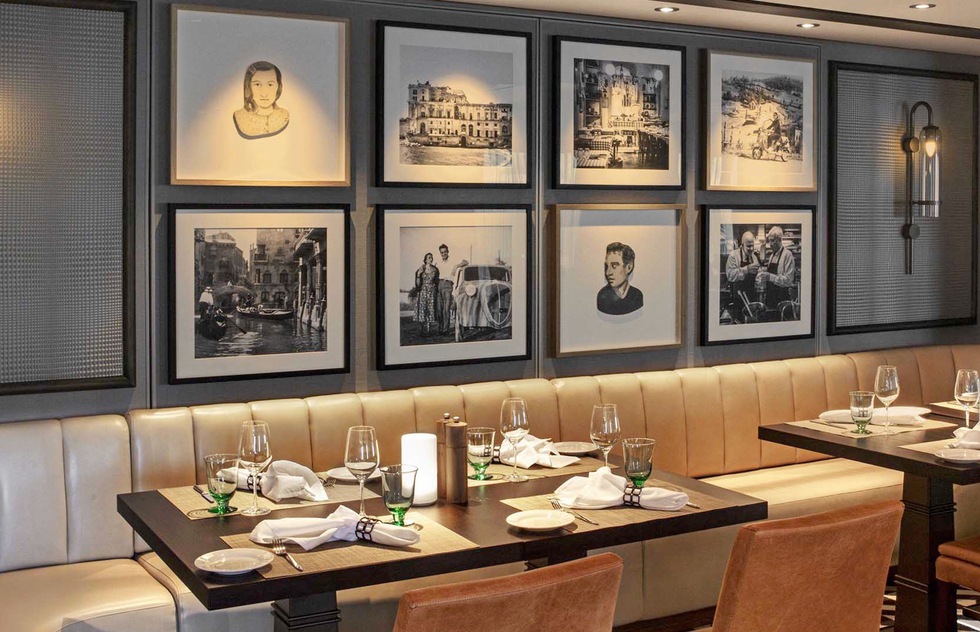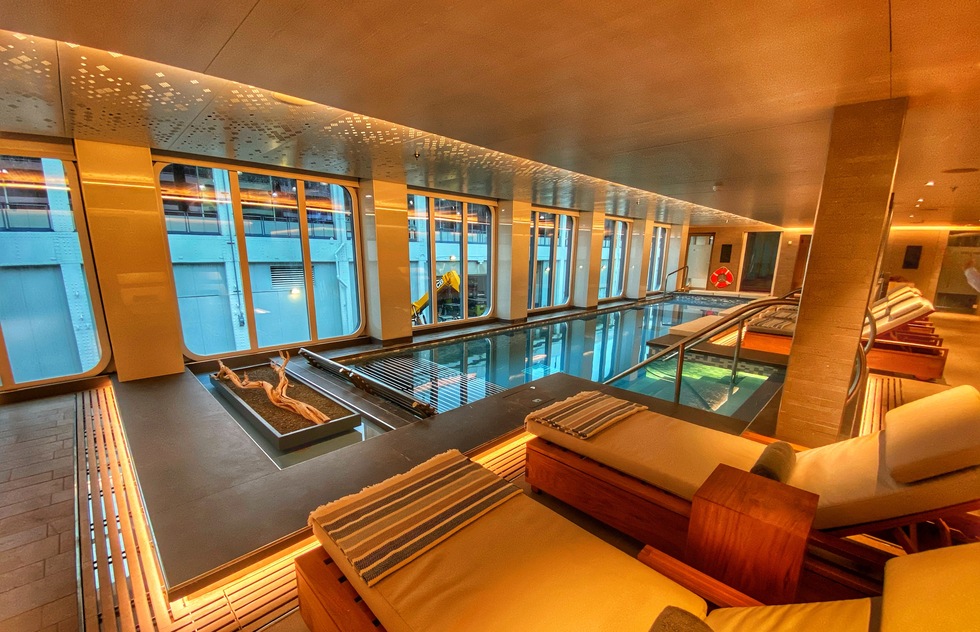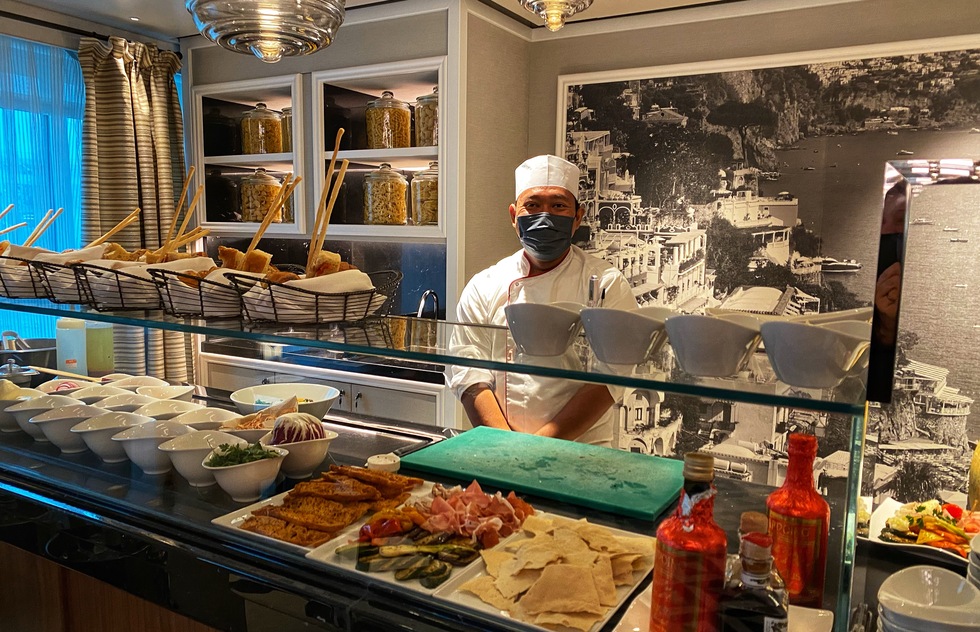What Are Viking's New Expedition Ships Like? A Tour of the Viking Octantis
By Pauline FrommerSince the 1960s, so-called "expedition cruises" have taken tourists to some of the most remote and exciting places on earth—the Arctic, Antarctica, and the Galapagos Islands most famously.
Early on, the hallmarks of an expedition cruise emerged. Many of these voyages carried scientists, who would engage in their own research and offer educational enrichment for the paying passengers. Since there are often no cruise ports in these areas, inflatable Zodiac boats and other small craft ferry passengers to the shore, meaning vacationers had to be reasonably fit to make the voyage.
Despite using bare-bones ships with limited dining options, tiny staterooms, and no swimming pools on board, this type of cruising has always been pricey. Passengers were told the cost had to do with the difficulties involved in accessing forbidding locations.
Alas, expedition cruises remain expensive. But in recent years several swank operators have entered the market and have begun adding the sorts of high-end luxuries passengers might expect at these prices.
In 2022 Viking Cruises is launching its first two expedition cruise ships. I toured one of them, the Octantis, when it was docked in New York Harbor. Here are some observations on how the ship differs from other expedition ships and more traditional cruising vessels.
I gotta start with the most exciting feature of the Octantis: the two submarines that live in the hold and are available for passengers to ride at no extra charge.
Looking a bit like massive bugs due to their 270-degree spherical windows, these subs can submerge down to 1,000 feet. Each seats six guests and a pilot, and features revolving seats, allowing visitors to pivot rapidly to see whatever's floating by.
Because the subs are used for scientific research, each is equipped with mounted cameras and a manipulator arm that can grab samples. Though the boat had only been in service for a few months when I visited, the cameras had already spied one of the ocean's most seldom-seen creatures: the giant phantom jellyfish.
Fittingly, the submarines are yellow and named John and Paul (though it seems like Ringo should get some credit for his lead vocal).
Along with the subs, the ship carries several Zodiacs, two-seater Hobie kayaks, and two special-operations boats of the same model used by the Royal Norwegian Navy. The latter boast observation platforms and suspended seats that allow guests to peer into the water without standing. A multibeam sonar system is part of each boat's state-of-the-art navigation.
The lab pictured here was designed in partnership with the U.K.'s University of Cambridge. Part of the design involved making the facility easy to mop up—a crucial requirement in a lab that studies wet things while floating on the ocean.
Passengers can help the team of resident scientists on numerous projects, from peering through microscopes to get counts of microplastics in water samples to releasing weather balloons.
The latter is a fun daily event on the ship. The National Oceanic and Atmospheric Administration has installed onboard equipment for long-term atmospheric research, with plans to collect years' worth of data to study broader patterns. In fact, the NOAA has designated the Octantis and sister ship the Polaris as official weather stations.
Unseen but as important as the weather balloons are the suite of sensors called "Ferry boxes" stationed on the hull of the ship to provide a continuous stream of oceanic and atmospheric data to Viking's numerous scientific partners.
Science isn't limited to the lab. The ship's onboard theater, The Aula, is open to the view on three sides so that lecturers can bring in the natural world during talks and demonstrations. When the scenery isn't the topic, high-tech screens drop so that documentaries and slides can be projected.
The space was inspired by the University of Oslo's ceremonial hall, where the Nobel Peace Prize ceremony was held before being moved to the larger Oslo City Hall.
This lounge has slanted windows set right above and at water level to allow guests to peer into the briny. Other viewing areas are set up as libraries, with books available for the taking (no need to sign them out or return them at a special time). As inviting as the inside spaces are, piles of blankets are placed throughout the ship to encourage guests to wander outdoors even on windy days in the Arctic or Antarctic.
As on Viking's traditional ocean cruises, passengers have several choices of restaurants but don't have to pay extra fees for "specialty" venues or entrees (as on ships operated by many other cruise lines).
Manfredi's, pictured above, is an Italian eatery named for the chairman and former owner of rival Silversea Cruises—the Italian-born Manfredi Lefebvre d'Ovidio is a buddy of Viking Cruises chairman Torstein Hagen. Hagen's mother and her Norwegian recipes are celebrated at the casual eatery Mamsen's.
There's also a buffet restaurant with a number of stations; they were brimming with crab legs when I was onboard. The handsome, unthemed main dining space is called simply The Restaurant. Room service that's available 24/7 and a bakery that offers breads and pastries at all hours round out the culinary offerings.
Beer and wine are included with all meals. Imbibing outside of lunch or suppertime can be done in the lounges, sometimes to the accompaniment of live music. The Aquavit Terrace (pictured above) is named for the Scandinavian potato-based spirit that's matured onsite. You'll also find The Hide, a shipboard speakeasy. But this isn't a rowdy booze cruise by any stretch of the imagination. The majority of passengers are at retirement age or above, which usually keeps the scene sedate.
For those who've always wanted to try a guided Nordic bathing ritual, what's available here is authentic, down to getting slapped with branches and led on a procession through different heated and cold rooms, including one with a pile of snow. Pictured here is the plunge pool. Also available: more Americanized spa treatments as well as a beauty and hair salon.
The Octantis has a gross register tonnage, or internal volume, of 30,150—more than twice to a third larger than the biggest numbers posted by competitors such as Linblad Expeditions (12,000), Silversea (17,400), and Seabourn Cruise Line (23,000). Consequently, guest quarters aboard the Octantis are roomy.
Each comes with a small alcove (pictured above) with a large window that can be opened to half its height, giving what Viking calls the "sunroom" (though it's not a separate room) something like the feel of a balcony. If you've ever been on a train that has windows that open down this way, you've seen what are sometimes called "Nordic windows." They all have big ledges, perfect for setting down your cocktail as you gaze out at the scenery.
Rooms themselves are comfortable—if a bit generic in looks—with every contemporary convenience: heated bathroom floors, inductive charging surfaces for phones on the nightstands, air-drying closets, large TVs, and multiple outlets. Guests get loaner binoculars to appreciate the views and headphones to hear better on tours.
Perhaps most important for this era: Each room has its own HVAC unit, removing the possiblity of shared air between staterooms. The ship has its own PCR testing lab, too. When I was on board, passengers were taking daily tests, which should help relieve fears about unmasking indoors.
Viking's expedition ships were conceived and built for colder environments such as the Arctic and Antarctic, but the Octantis will also be plying the waters in and around the Great Lakes of the U.S. and Canada as well as in the Caribbean and South America.
Because of that arctic alignment, though, the ships were built to be very stable—a necessity when navigating rough polar seas. Fin stabilizers reduce movement while the vessel is in motion, and a large U-shaped tank in the hull is designed to reduce rolling by 50% when the ship is stationary.
Additionally, Viking has done a lot to limit the environmental impact, using a chemical incinerator process to have zero-emissions waste treatment, installing bird-safe outdoor lighting levels, quieting ship propulsion to minimize underwater noise pollution, and adopting other eco-friendly measures.
For more info or to make a reservation, go to the Viking Expeditions website.





